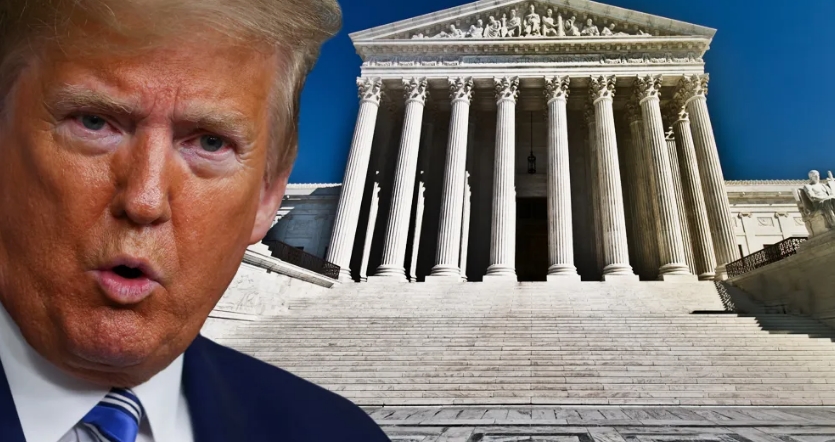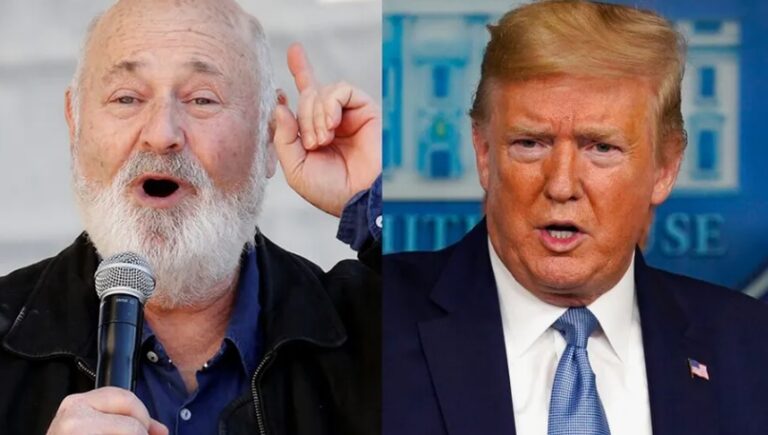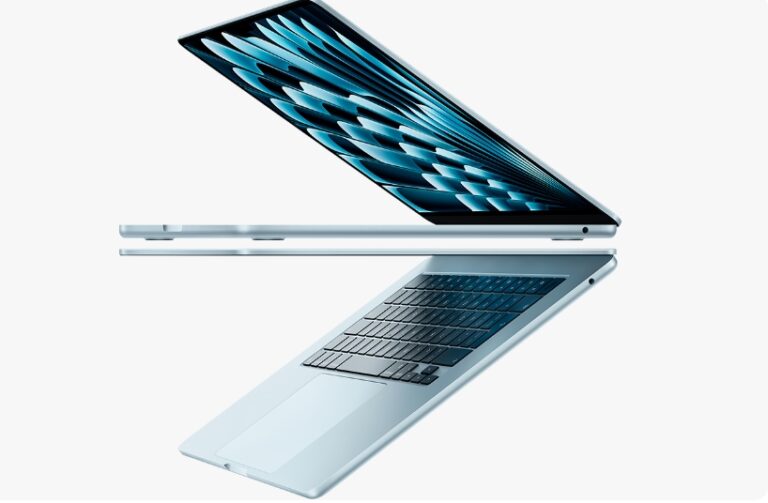
If Supreme Court finds against Trump tariffs, here’s what you may expect – If the Supreme Court throws down many of the tariffs President Donald Trump enacted during his second term in office, businesses could seek refunds and consumers could expect some potential price decreases in the long run.
Both should expect increased uncertainty.
The nation’s top court agreed Sept. 9 to hear Trump’s appeal of lower court judgments that he overreached when he invoked a 1977 law to put tariffs on imports from most countries. If the court sides against him, many – but not all – of the tariffs imposed during his second term could be affected. Trump has stated the United States will face a “economic disaster” unless the tariffs remain in place. Economic analysts aren’t so sure. The justices will hear arguments in November.
Rohit Tripathi, vice president of industry strategy, manufacturing, at RELEX, said while refunds could boost businesses’ bottom lines, customers wouldn’t be likely to witness rapid price decreases on shelves. “Simply because a lot of the businesses so far have either been absorbing those increased costs or pushing their suppliers to absorb these costs,” Tripathi added.
Which tariffs would be affected?
This case concerns tariffs Trump enacted under the International Emergency Economic Powers Act, or IEEPA. This legislation authorizes the president take economic steps, including limiting or prohibiting imports and exports, to cope with “any unusual and extraordinary” foreign threat to U.S. national security, foreign policy, or the economy, as long as the president declares a national emergency.
Trump cited IEEPA on Feb. 1 when he announced duties on imports from China, Canada, and Mexico, connected to declared emergencies surrounding drug trafficking and illegal immigration. These are commonly referred to as the “fentanyl tariffs,” and comprise a spectrum of duties placed on imports from the three countries.
The Trump declared another emergency on April 2 over U.S. trade deficits and what he described as unfair trade practices. In response to that announcement, Trump levied a 10% tariff across the board and even higher “reciprocal tariffs” on certain countries.
Import duties on metals and steel, imposed under Section 232 of the 1962 Trade Expansion Act, are irrelevant to this case.
Would the administration need to provide refunds?
In an interview with “Meet the Press” on September 7, U.S. Treasury Secretary Scott Bessent said that the department would have to refund “about half the tariffs,” a situation that would be “terrible for the Treasury.” Although the Supreme Court’s judgment could be delayed until June 2026, Trump has stated that he will request an expedited verdict.
“The longer a final ruling is delayed, the greater the risk of economic disruption,” Bessent stated in a submission to the Supreme Court. “For instance, if a ruling is postponed until June 2026, there’s a chance that tariffs ranging from $750 billion to $1 trillion have already been collected, and removing them could lead to considerable chaos.”
Could additional tariffs be imposed by Trump?
Global strategy and management consulting firm Kearney’s Drew DeLong, who heads up the Geopolitical Dynamics Practice, said that the White House would likely quickly put a backup plan into action if the Supreme Court were to rule against Trump.
That may appear like the administration invoking Section 122 of The Trade Act of 1974 to impose new tariffs. The president can impose temporary import tariffs of up to 15% under this clause if he deems it essential to deal with “large and serious United States balance-of-payments deficits” or other “fundamental payments problems.” Nevertheless, the tariffs may only stay in effect for a maximum of 150 days according to that law.
There is a fuse on it. The question then becomes, what happens when the fuse blows? That was another enormous question mark. Can you re-up it?” DeLong stated.vHe imagines the White House’s backup plan could look like the administration using Section 122 to set that 150-day gap in place, and then using Section 301 of the same act, which would allow the administration to impose tariffs in response to actions by foreign governments that burden or restrict U.S. commerce. That strategy needs an examination into each country, and is “much more cumbersome,” according to DeLong.
DeLong also said the White House would have the “wild card” option of soliciting help from Congress, which has the power to control foreign business and apply import duties. “Tariffs aren’t super popular,” DeLong remarked. “So, what would Congress do?”
What firms could expect, Tripathi said Wall Street would, at least briefly, If the Supreme Court throws down many of the tariffs President Donald Trump enacted during his second term in office, businesses could seek refunds and consumers could expect some potential price decreases in the long run. Both should expect increased uncertainty.
The nation’s top court agreed Sept. 9 to hear Trump’s appeal of lower court judgments that he overreached when he invoked a 1977 law to put tariffs on imports from most countries. If the court sides against him, many – but not all – of the tariffs imposed during his second term could be affected. Trump has stated the United States will face a “economic disaster” unless the tariffs remain in place. Economic analysts aren’t so sure. The justices will hear arguments in November.
Rohit Tripathi, vice president of industry strategy, manufacturing, at RELEX, said while refunds could boost businesses’ bottom lines, customers wouldn’t be likely to witness rapid price decreases on shelves. “Simply because a lot of the businesses so far have either been absorbing those increased costs or pushing their suppliers to absorb these costs,” Tripathi added.
Which tariffs would be affected?
This case concerns tariffs Trump enacted under the International Emergency Economic Powers Act, or IEEPA. This legislation authorizes the president take economic steps, including limiting or prohibiting imports and exports, to cope with “any unusual and extraordinary” foreign threat to U.S. national security, foreign policy, or the economy, as long as the president declares a national emergency.
Trump cited IEEPA on Feb. 1 when he announced duties on imports from China, Canada, and Mexico, connected to declared emergencies surrounding drug trafficking and illegal immigration. These are commonly referred to as the “fentanyl tariffs,” and comprise a spectrum of duties placed on imports from the three countries.
The Trump declared another emergency on April 2 over U.S. trade deficits and what he described as unfair trade practices. In response to that announcement, Trump levied a 10% tariff across the board and even higher “reciprocal tariffs” on certain countries. Import duties on metals and steel, imposed under Section 232 of the 1962 Trade Expansion Act, are irrelevant to this case.
Would the administration need to provide refunds?
In an interview with “Meet the Press” on September 7, U.S. Treasury Secretary Scott Bessent said that the department would have to refund “about half the tariffs,” a situation that would be “terrible for the Treasury.” Although the Supreme Court’s judgment could be delayed until June 2026, Trump has stated that he will request an expedited verdict.
“The longer a final ruling is delayed, the greater the risk of economic disruption,” Bessent stated in a submission to the Supreme Court. “For instance, if a ruling is postponed until June 2026, there’s a chance that tariffs ranging from $750 billion to $1 trillion have already been collected, and removing them could lead to considerable chaos.”
Could additional tariffs be imposed by Trump?
Global strategy and management consulting firm Kearney’s Drew DeLong, who heads up the Geopolitical Dynamics Practice, said that the White House would likely quickly put a backup plan into action if the Supreme Court were to rule against Trump.
That may appear like the administration invoking Section 122 of The Trade Act of 1974 to impose new tariffs. The president can impose temporary import tariffs of up to 15% under this clause if he deems it essential to deal with “large and serious United States balance-of-payments deficits” or other “fundamental payments problems.” Nevertheless, the tariffs may only stay in effect for a maximum of 150 days according to that law.
There is a fuse on it. The question then becomes, what happens when the fuse blows? That was another enormous question mark. Can you re-up it?” DeLong stated. He imagines the White House’s backup plan could look like the administration using Section 122 to set that 150-day gap in place, and then using Section 301 of the same act, which would allow the administration to impose tariffs in response to actions by foreign governments that burden or restrict U.S. commerce. That strategy needs an examination into each country, and is “much more cumbersome,” according to DeLong.
DeLong also said the White House would have the “wild card” option of soliciting help from Congress, which has the power to control foreign business and apply import duties. “Tariffs aren’t super popular,” DeLong remarked. “So, what would Congress do?”
What firms could expect. Tripathi said Wall Street would, at least briefly, reward businesses that have been significantly harmed by tariffs through hikes in their stock value if the court rules against Trump.However, the move would generate “a wide range of headaches” for CEOs, according to DeLong.
Businesses who have paid tariffs during Trump’s second term in office will first ask whether they qualify for a refund and how they could acquire one. Then comes the question: What now? Businesses will watch to see if the White House rapidly acts to implement a provisional solution. “If there is a window of time where they’re not in effect, before the White House does something, you have a question of: how quickly can you restock the shelves or restock inventory?” DeLong added.
While economic uncertainty has plagued boardrooms this year, some businesses are not putting plans on hold. They’re planning for many scenarios and putting data infrastructure in place so they can pivot if tariffs change. “When there’s this significant of volatility, waiting is a strategy,” DeLong said. What shoppers could expect . If the Supreme Court knocks down the tariffs, the ruling would not herald relief for customers this holiday season, as import and inventory decisions for that time of year were taken months ago, according to Tripathi. If Supreme Court finds against Trump tariffs
In six to eight months following the ruling, Tripathi said consumers may see more product on shelves, but that it would likely be a year or longer before consumers may notice some price decreases. Katie Thomas, who directs the Kearney Consumer Institute, an internal think tank at Kearney, said it’s unlikely consumers will receive any form of return for prior tariff expenses that have been transferred to them. However, she suggested that some companies might endeavor to bring down costs to an acceptable level and the refunds they receive could lead to less layoffs.
“Could it change rates? Could it change inflation? Those harder questions and unemployment are what I’d really be watching for,” Thomas said. “Broadly, what would help consumers the greatest, that I just don’t think is in our near future for years, is just less uncertainty.”
reward businesses that have been significantly harmed by tariffs through hikes in their stock value if the court rules against Trump.However, the move would generate “a wide range of headaches” for CEOs, according to DeLong. Businesses who have paid tariffs during Trump’s second term in office will first ask whether they qualify for a refund and how they could acquire one. Then comes the question: What now? Businesses will watch to see if the White House rapidly acts to implement a provisional solution. “If there is a window of time where they’re not in effect, before the White House does something, you have a question of: how quickly can you restock the shelves or restock inventory?” DeLong added. If Supreme Court finds against Trump tariffs
While economic uncertainty has plagued boardrooms this year, some businesses are not putting plans on hold. They’re planning for many scenarios and putting data infrastructure in place so they can pivot if tariffs change. “When there’s this significant of volatility, waiting is a strategy,” DeLong said. What shoppers could expect. If the Supreme Court knocks down the tariffs, the ruling would not herald relief for customers this holiday season, as import and inventory decisions for that time of year were taken months ago, according to Tripathi.
In six to eight months following the ruling, Tripathi said consumers may see more product on shelves, but that it would likely be a year or longer before consumers may notice some price decreases. Katie Thomas, who directs the Kearney Consumer Institute, an internal think tank at Kearney, said it’s unlikely consumers will receive any form of return for prior tariff expenses that have been transferred to them. However, she suggested that some companies might endeavor to bring down costs to an acceptable level and the refunds they receive could lead to less layoffs.
“Could it change rates? Could it change inflation? Those harder questions and unemployment are what I’d really be watching for,” Thomas said. “Broadly, what would help consumers the greatest, that I just don’t think is in our near future for years, is just less uncertainty.” If Supreme Court finds against Trump tariffs




